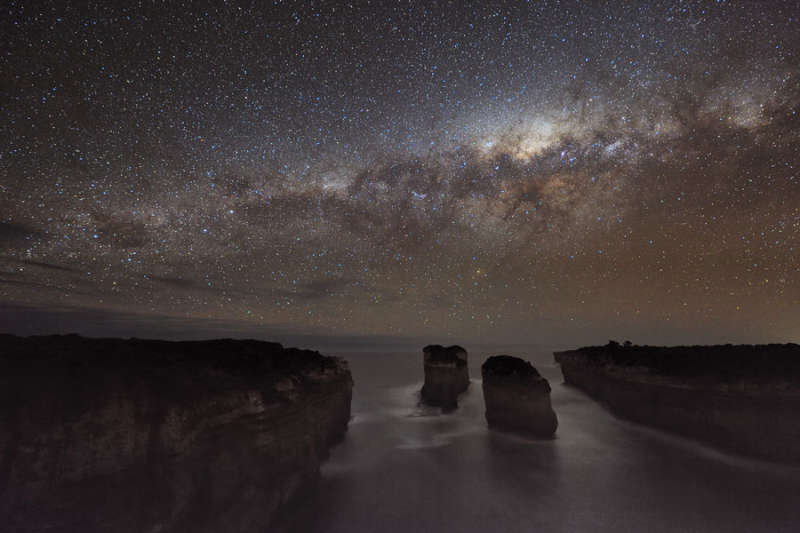
|
Credit & Copyright: Alex Cherney
(Terrastro)
Explanation:
Have you ever seen the Milky Way's glow create shadows?
To do so, conditions need to be just right.
First and foremost, the sky must be relatively clear of clouds so that the
long band of the
Milky Way's central disk can be seen.
The surroundings must be very near to completely dark, with no bright
artificial lights visible anywhere.
Next, the
Moon cannot be anywhere above the horizon,
or its glow will dominate the landscape.
Last, the shadows
can best be caught on long camera exposures.
In the above image taken in
Port Campbell National Park,
Victoria,
Australia,
seven 15-second images of the ground and
de-rotated sky were digitally added to bring up the needed
light and detail.
In the foreground lies
Loch Ard Gorge, named after a
ship that tragically ran aground in
1878.
The two rocks pictured are the remnants of a collapsed arch and are named Tom and
Eva after the only two people who survived that
Loch Ard ship wreck.
A close inspection of the
water just before the rocks will show shadows in light thrown by our
Milky Way galaxy.
Low clouds are visible moving through the serene scene in
this movie.
|
January February March April May June July August September October November December |
| |||||||||||||||||||||||||||||||||||||||||||||||||||||||
NASA Web Site Statements, Warnings, and Disclaimers
NASA Official: Jay Norris. Specific rights apply.
A service of: LHEA at NASA / GSFC
& Michigan Tech. U.
Based on Astronomy Picture
Of the Day
Publications with keywords: Milky Way - shadow
Publications with words: Milky Way - shadow
See also:
- APOD: 2025 July 2 Á Milky Way Through Otago Spires
- APOD: 2025 May 20 Á Milky Way over Maunakea
- APOD: 2025 May 13 Á Gaia Reconstructs a Top View of our Galaxy
- APOD: 2025 May 12 Á Gaia Reconstructs a Side View of our Galaxy
- Galaxies in Space
- APOD: 2025 February 9 Á Milky Way over the Australian Pinnacles
- APOD: 2024 November 24 Á Journey to the Center of the Galaxy
